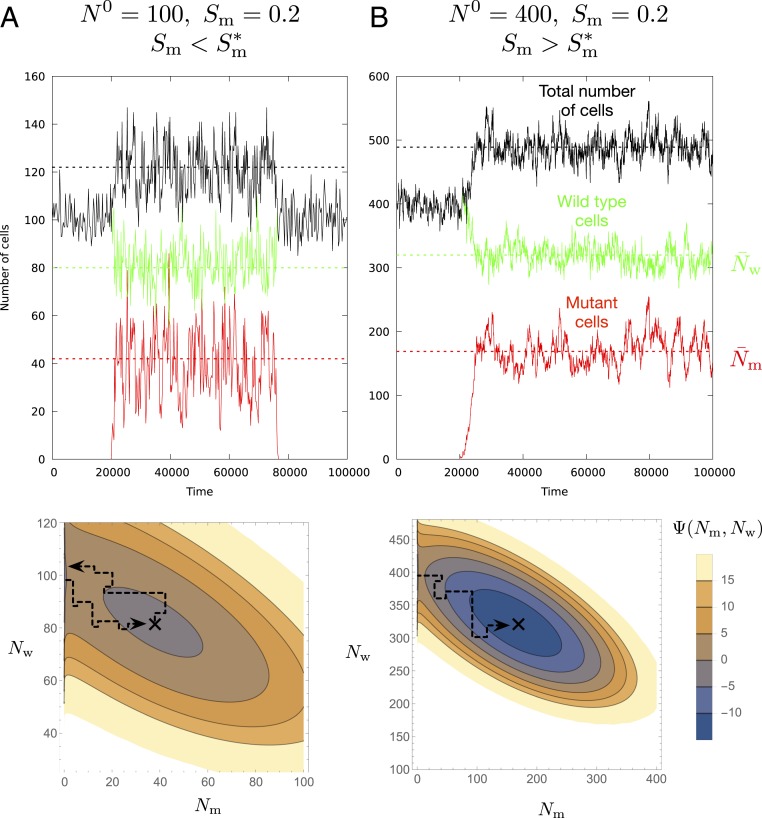Fig. 2.
Mutants go extinct under a threshold proliferation advantage. The continuous lines show the size of the mutant (red) and wild-type (green) populations and their combined number (black) during the simulation. The dashed lines correspond to the theoretical mean population sizes in the quasi-stationary state. (A, Top) If the proliferation advantage of the mutant is below the threshold, the mutant will rapidly escape from the shallow quasi-stationary state and go extinct. (A, Bottom) The black on the continuous approximation of the potential marks the quasi-stationary state. Parameters are , , and , and is below the threshold . (B, Top and Bottom) Increasing the compartment size to , the potential well becomes deeper and the threshold proliferation advantage becomes correspondingly smaller , allowing a mutant with the same advantage of to persist in the tissue during the individual’s lifetime.

